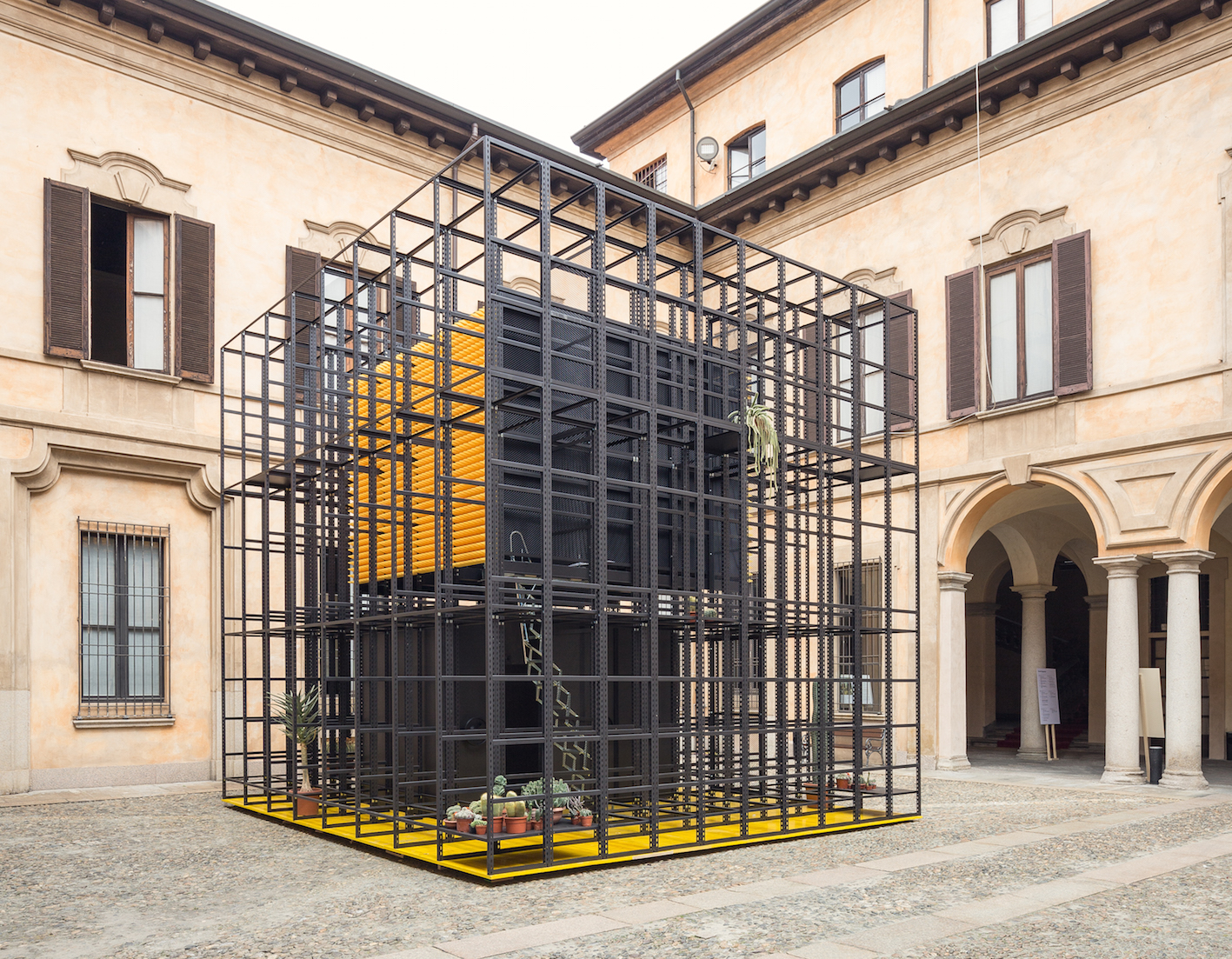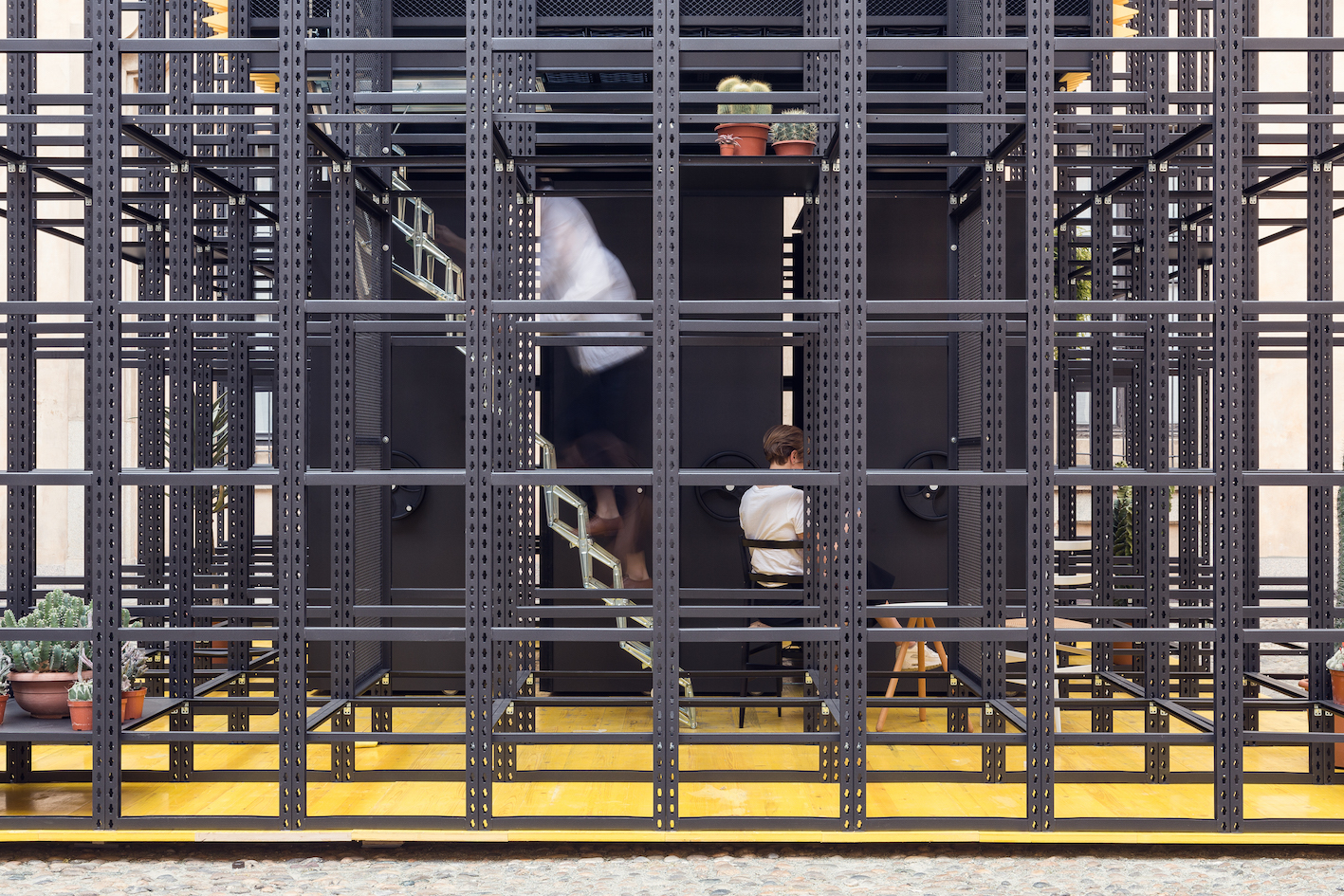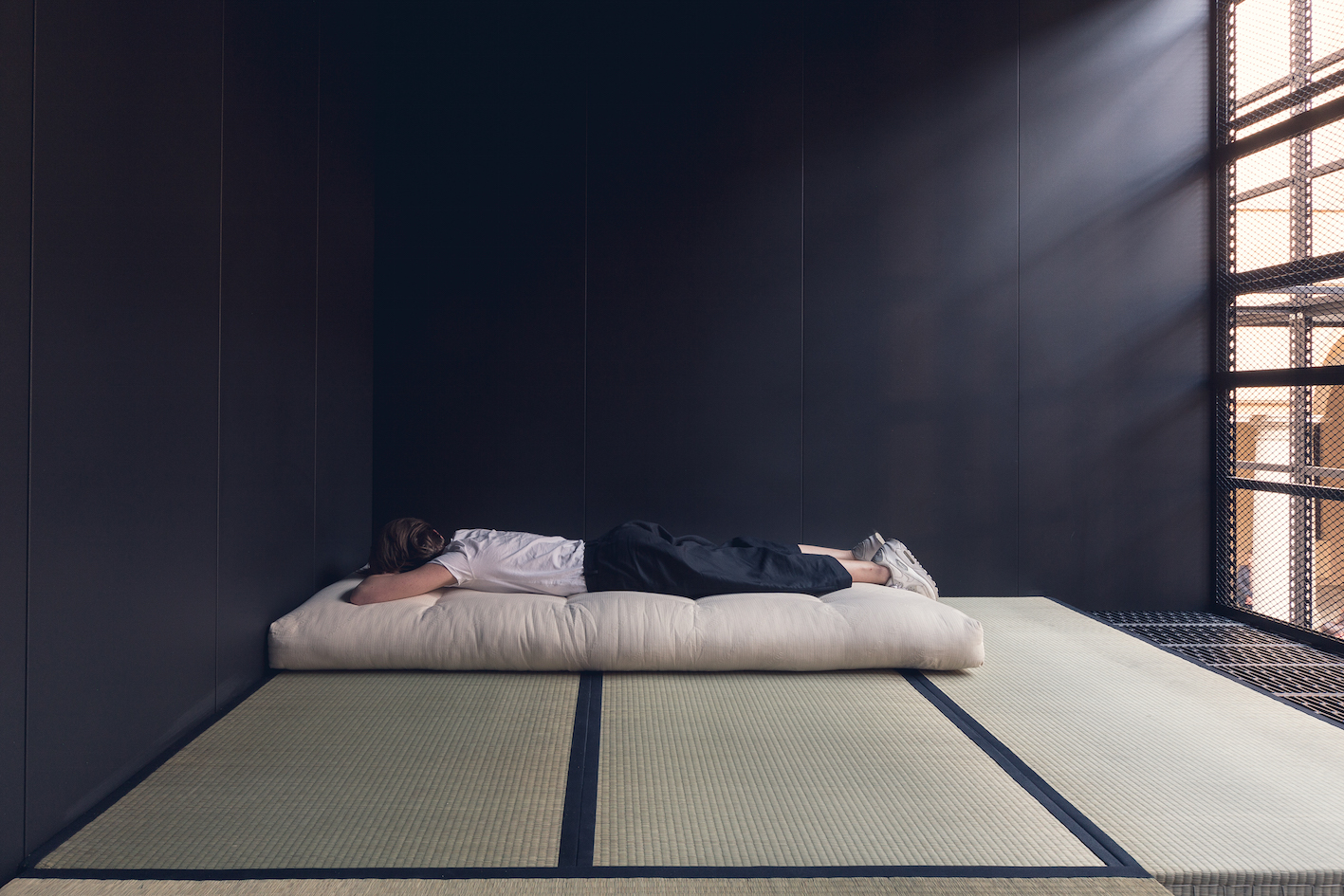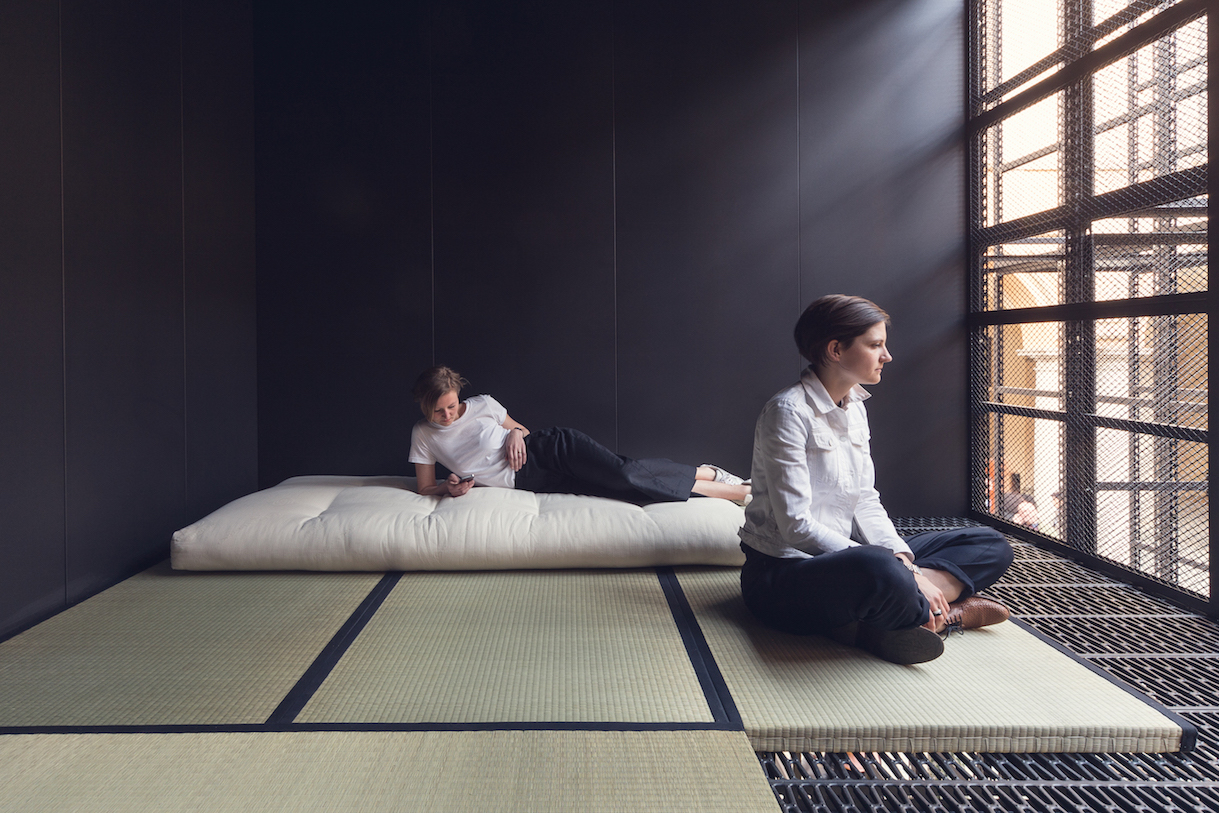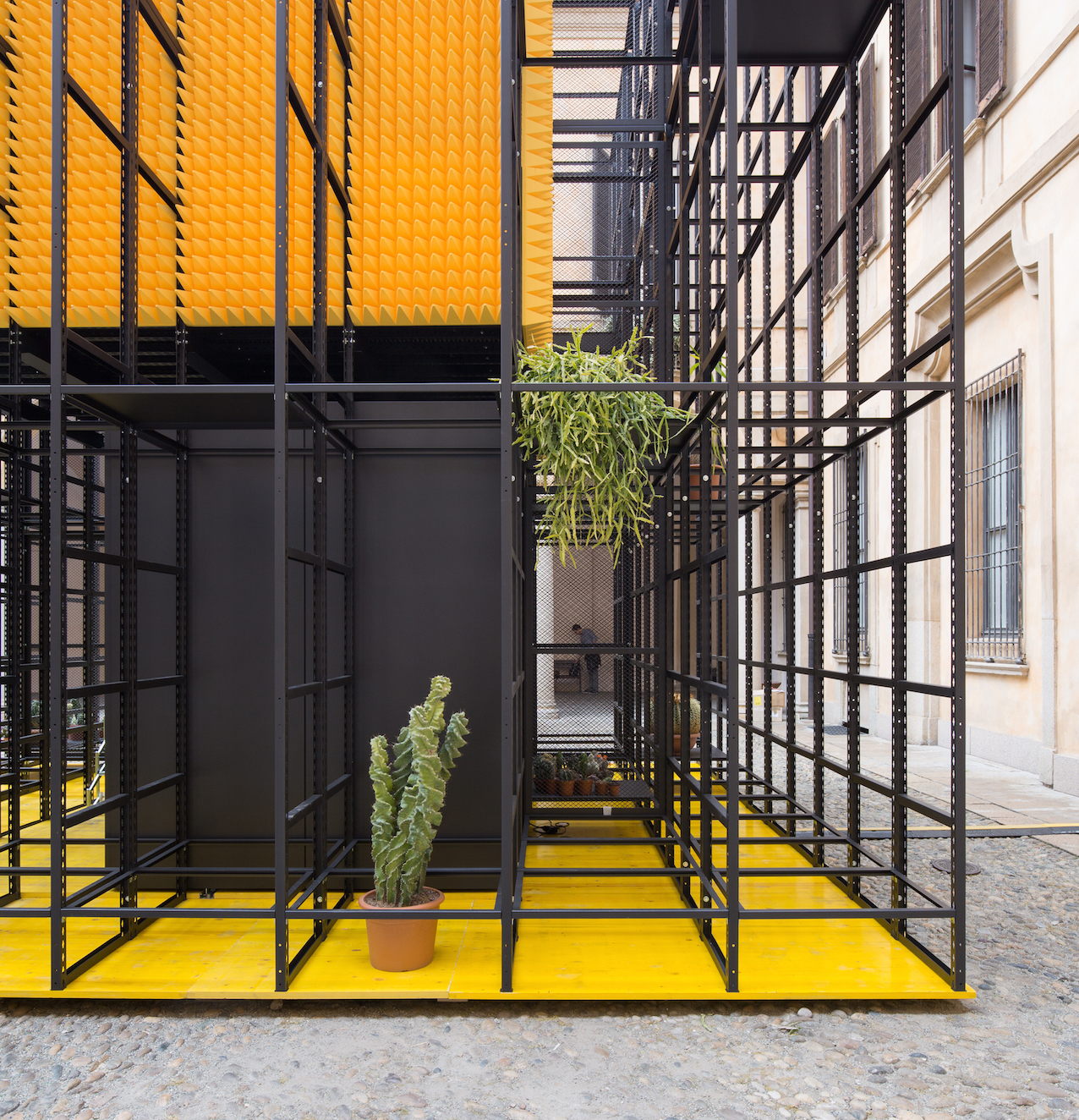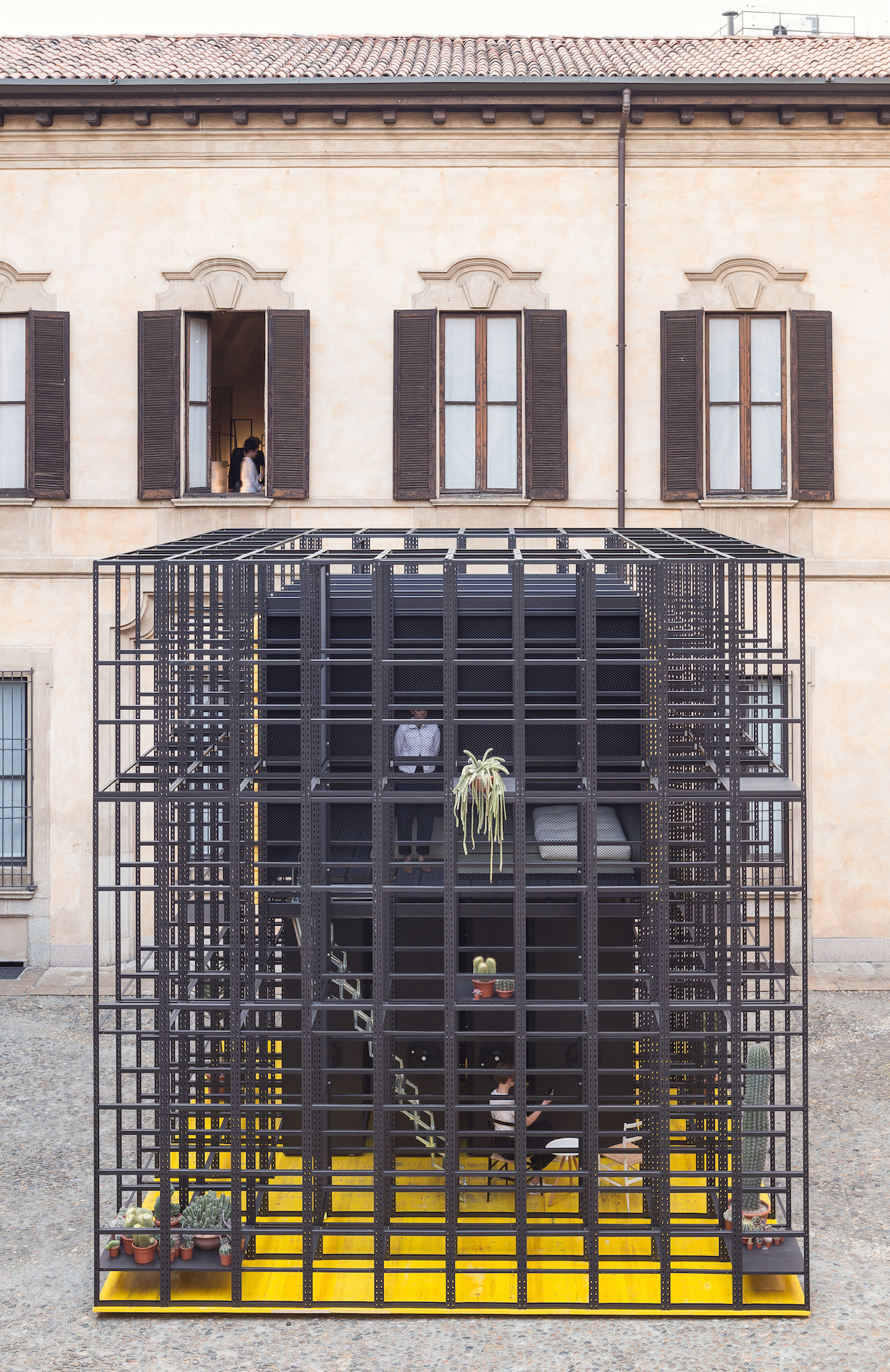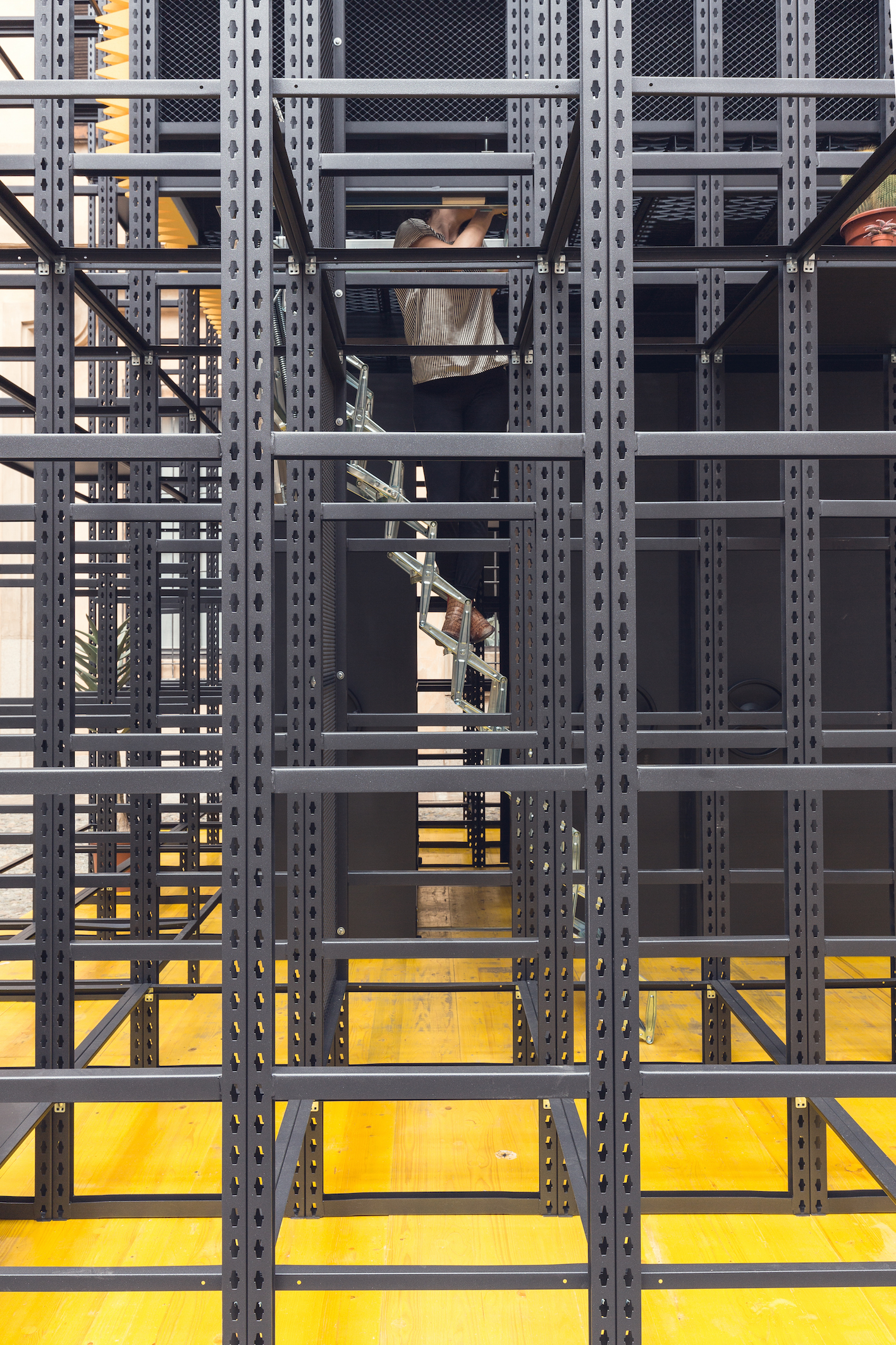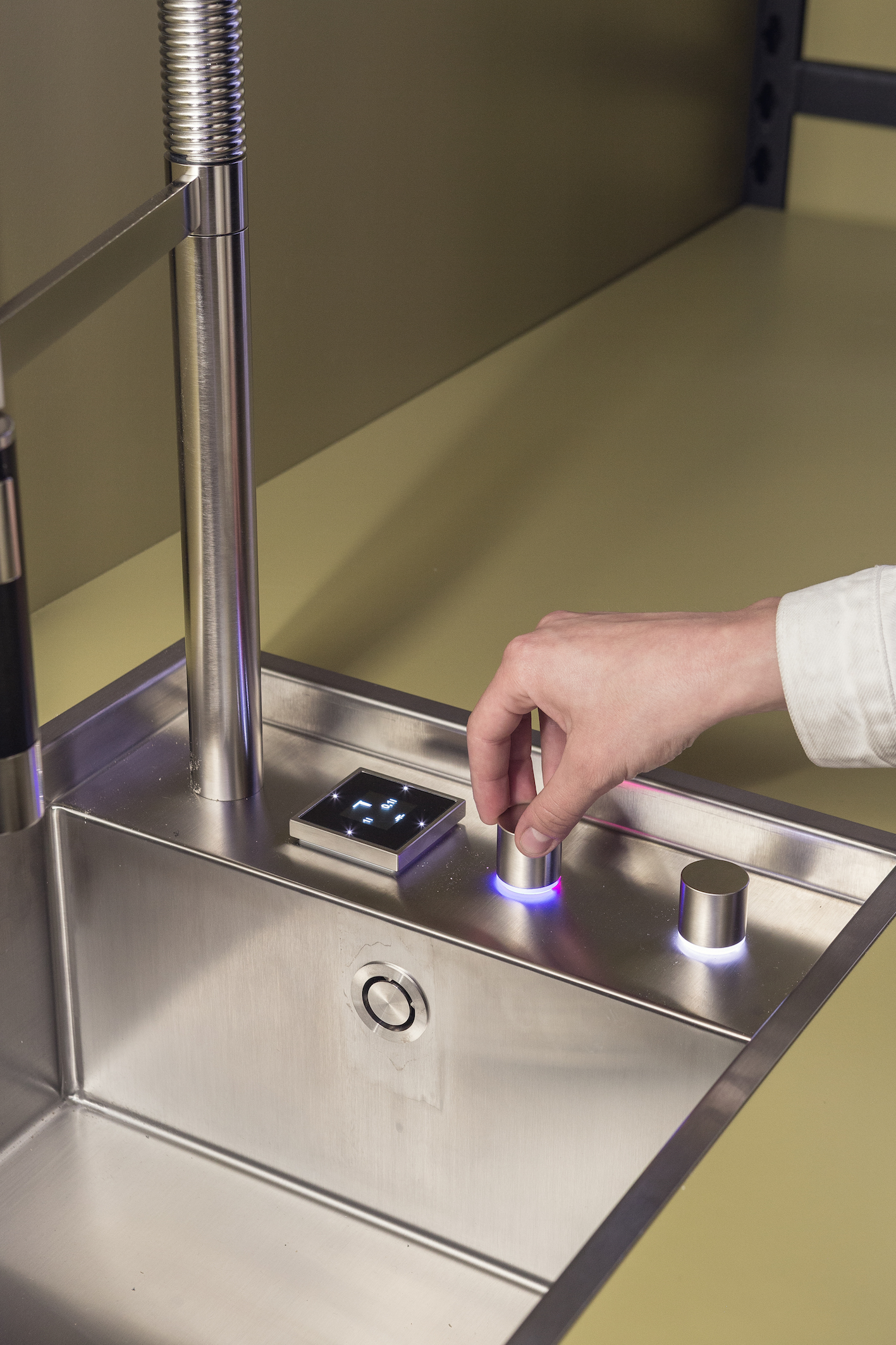18 April 2015
We are living in an age of intelligent electric appliances and communications based on signals. Our lives are increasingly caught in a mesh of information, extremely useful to be sure—and handled by smart devices that are able to monitor their surroundings—but also with a high level of electromagnetic radiation. Out of these reflections has come Space Caviar’s project RAM House, produced by the Italian company Prokoss-Mobilrot: a prototype developed on two levels and installed for the duration of the Design Week in the courtyard of Palazzo Clerici 5 in Milan, as part of the Atelier Clerici event. Above and beyond considerations linked to the possible harmful effects of electromagnetic fields—something which has not yet been assessed with any precision—what interests the Genoese studio of Joseph Grima and Tamar Shafrir is the resulting change in the role of the domestic shell: the home is no longer a shield protecting us from the gaze of outsiders, but an entity that observes us from within. The RAM House represents an attempt to turn this logic on its head and allow us to regain control of our spaces and our lives: panels of Radar-Absorbent Material (RAM) and Faraday cages prevent signals from entering and leaving. Space Caviar’s house-hut is built out of modules that destructure the traditional division of spaces: the upper level is for sleeping, while the lower one accommodates domestic functions on shelves and in filing cabinets that open or close as and when needed. From Milan, it will move to Genoa, to the courtyard of the Museo d’Arte Contemporanea at Villa Croce. It can be visited from June onward.
